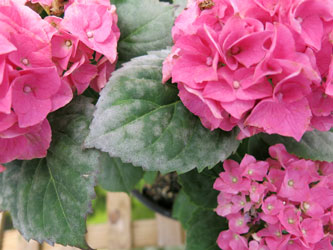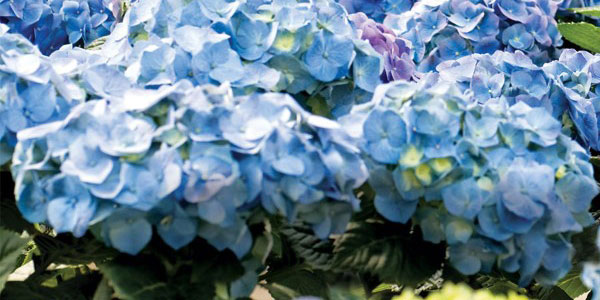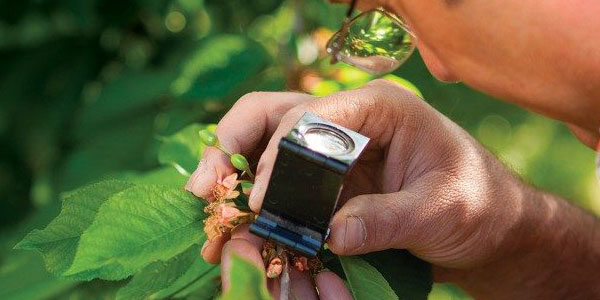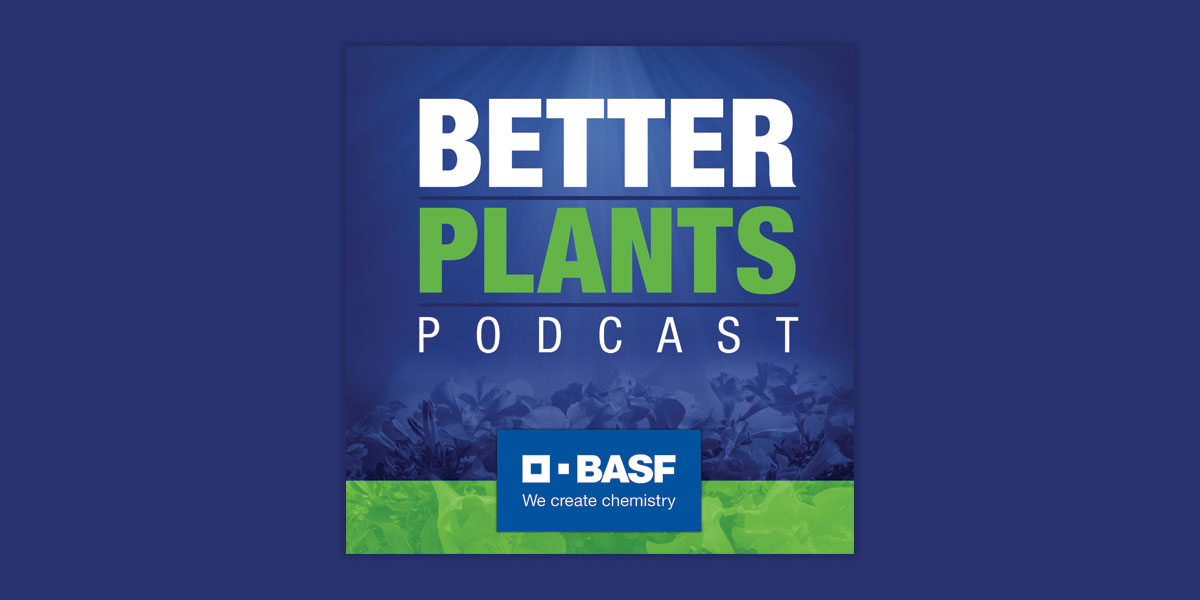CANNONBALL! Splash into summer with protected hydrangeas
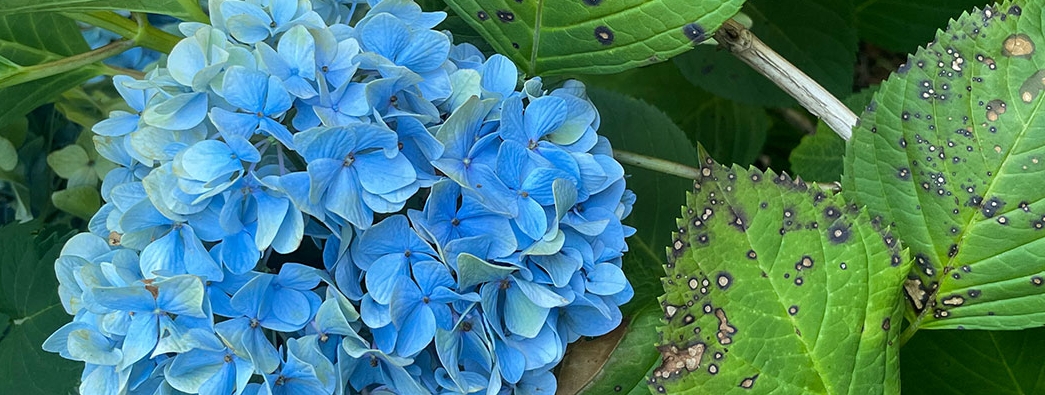

Emma Lookabaugh, PhD
Senior Technical Specialist, Southeast Region

Jen Browning PCA
Senior Technical Specialist, Western Region
Production is in full-swing, and you’ve been shipping out plants left and right trying to keep up with demands from the weekend warriors. Now that winter is finally in our rearview and summertime is calling, let’s shift our attention to a true summer classic — the hydrangea.
Whether it’s summers at the Cape or a backyard cookout at home, hydrangeas set the scene for a good time. To set these plants up for success in the landscape, we must get them through production unscathed — and that means protecting them from diseases and insects along the way. On the disease front, powdery mildew, Cercospora leaf spot and Botrytis blight are the most common.
Bigleaf hydrangeas tend to be more susceptible to powdery mildew than other types. In indoor production settings, powdery mildew is active year-round but warm days and cool nights favor disease development. This disease is easily recognizable by the powdered sugar-like coating on the leaves. While aesthetically unpleasing, powdery mildew is usually easily managed with preventive fungicide applications, and luckily you have a variety of effective products to pick from.
Treat before symptom development or at the first sign of disease. The longer you wait, the harder it is to clean up, and heavily infested plants can be slow to grow with poor flower production.
ROTATE TO PROTECT:
Pageant® Intrinsic® brand fungicide (BASF) or Orkestra® Intrinsic brand fungicide (BASF), Avelyo™ fungicide (BASF), Ultra-Pure® Oil horticultural insecticide, miticide and fungicide (BASF)
______________________________________________________________________________________________________________________________________________________________
Next up is Cercospora leaf spot and it definitely brings the heat in outdoor production settings where overhead irrigation and frequent rainfall are common. The pathogen produces spores that are easily windblown or splashed to nearby plant tissue — which is why Cercospora runs rampant during late summer rainstorms. Disease can progress rapidly and take advantage of missed fungicide applications. Symptoms first appear as small reddish-brown to dark purple leaf spots on lower leaves. As disease progresses, the lesion centers turn grey. Heavily infected leaves fall to the ground and serve as a continued source of inoculum. Reduce humidity and promote air circulation by properly spacing plants. Switch to drip irrigation when practical and reduce overhead irrigation to limit pathogen spread. Make preventive fungicide applications prior to symptom development and continue applications throughout the summer, as long as conditions are favorable for disease. Clean up any fallen leaves, bag in place, and remove.
ROTATE TO PROTECT:
Orkestra Intrinsic brand fungicide (BASF), Avelyo fungicide (BASF), Protect™ DF (Nufarm)
______________________________________________________________________________________________________________________________________________________________
We saved the worst for last. Botrytis hasn’t yet met a stranger and Botrytis blight is one of the most difficult diseases to control. A prolific spore producer, Botrytis readily spreads by wind and the wake left behind when you shuffle past infected plants. Grey tufts of spores are a dead give-away, but early signs of disease can easily be overlooked in dense canopies. Cool, cloudy and wet conditions favor disease development, so we see Botrytis pop up most often in the spring. Young, tender propagative material is particularly vulnerable, as are blooms.
Controlling Botrytis blight requires strict sanitation practices. Bag up any fallen crop debris and heavily infected plants — fungicides won’t save plants once Botrytis has made its way to the crown so throw them out. Protect young, tender tissue with preventive fungicide applications, and treat the entire crop preventively when the forecast shows cloudy conditions are coming.
ROTATE TO PROTECT:
Orkestra Intrinsic brand fungicide (BASF), Decree® (SePRO), Chipco® 26019 (OHP), Protect DF (Nufarm)
*no back-to-back applications of same FRAC group
______________________________________________________________________________________________________________________________________________________________
Squared away on the disease front, you aren’t the only one with summer on your mind. Insect and mite populations love those accumulating degree days. Hydrangeas deal with varying levels of six- and eight-legged pest pressure throughout the production cycle. It can begin in propagation with fungus gnats, spider mites and aphids. Once plants move to the can yard and finish, whiteflies, scale, flea beetles and scarabs (like Japanese beetles) may damage crops. If you overwinter stock in the northern states, black vine and other weevils can be a problem. You might have low insect and mite pressure overall; you might do battle all season long — it’s all regional and season dependent.
Fortunately, there are a variety of tools that can help, from biological to conventional. In greenhouses, biological options like beneficial insects, biological insecticides, and beneficial nematodes can control or suppress pest populations. Nemasys® beneficial nematodes and Velifer® fungal contact insecticide miticide are biological products from BASF that work to control fungus gnats, manage insect and mite populations in the greenhouse, and help the rest of your IPM program work better. Next up are conventional tools: chemistry. Targeted chemistries will allow growers to control the pest target and still be compatible with beneficials, and they can fit into both indoor and outdoor production. Sultan® miticide, Floramite® SC (OHP), Ventigra® insecticide, and Distance® Insect Growth Regulator (Valent) are examples of products with narrow ranges of activity that can be used in the presence of pollinators and other beneficials.
ROTATE TO PROTECT:
Aphids/Whiteflies/Scale: Ultra-Pure Oil horticultural insecticide, miticide and fungicide (BASF), Ventigra insecticide (BASF), Azatin® O (OHP)
Spider Mites: Sultan miticide (BASF), TetraSan® (Valent), Kontos® (Bayer)
Welcome summer from the back porch to the back forty with healthy, beautiful hydrangeas that are protected all season long.
Always read and follow label directions. Avelyo is a trademark of BASF. Intrinsic, Nemasys, Orkestra, Pageant, Sultan, Ultra-Pure, Velifer, Ventigra are registered trademarks of BASF.

